Ocana 172k, 107m**
The break day yesterday was refreshing and we were thinking big mileage today. Eduardo, Steve and I loaded the bikes up at the hotel in Arequipa, drove back to the Pan American Highway, and set off. We took a picture of Mt Misti, the Arequipa volcano, on the way out.
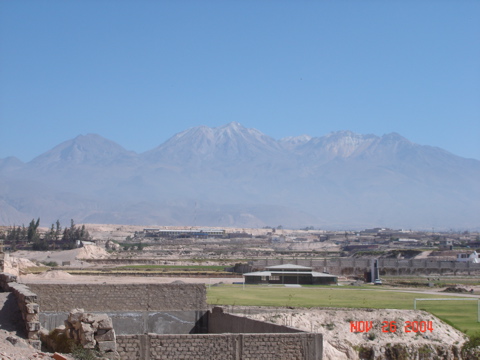
We were back in desert country, with periodic rivers yielding green valleys. The people out here all seem to live in woven palm leaf (?) huts.
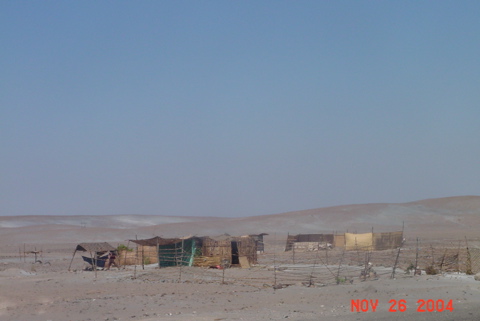
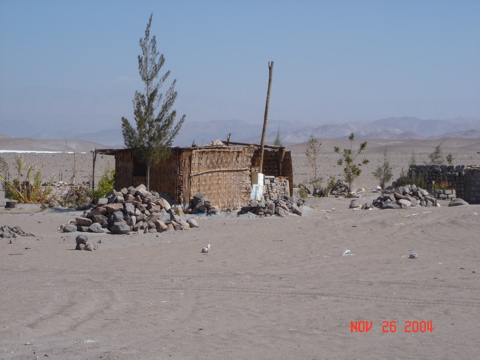
In places they line both sides of the road, and you can watch people building their homes.
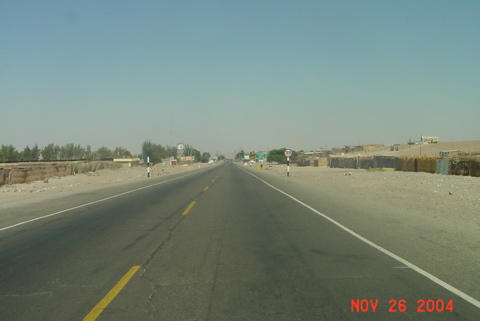
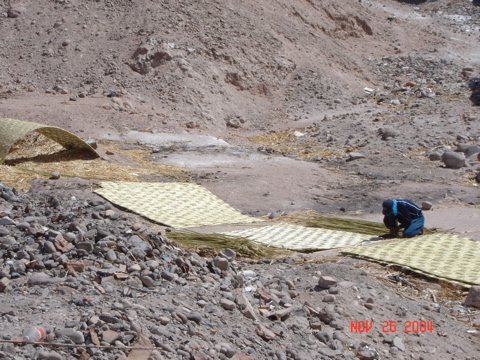
Steve and I rode, and Eduardo drove through a couple of valleys with some flora, but mostly it was a windy, dry day. We often see little sand spouts or mini-tornados. Here are pictures of Steve riding out of one of the valleys and of a wind/sand spout that we actually rode through.
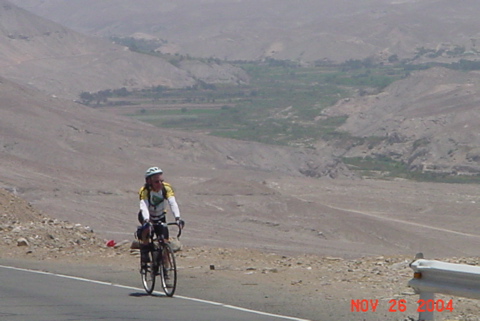
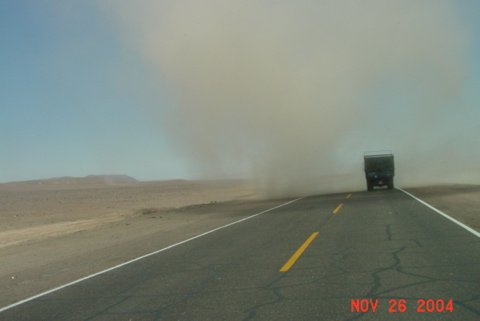
Steve and I held our breath and closed our eyes as we were sandblased by the sandspout. Other than that, it was a fairly easy morning ride heading back down to the Pacific and the coastal town of Camana. Along with the poverty evidenced by the (usually) no electricity, no plumbing woven homes came more people washing their clothes in irrigation ditches or carrying wood, sometimes by bike.
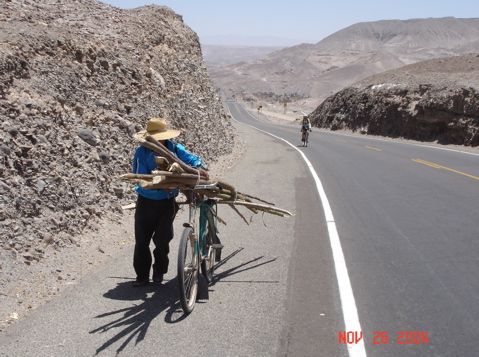
As we approached the coast south of Camana, we looked down on a wiped-out beach-front village.
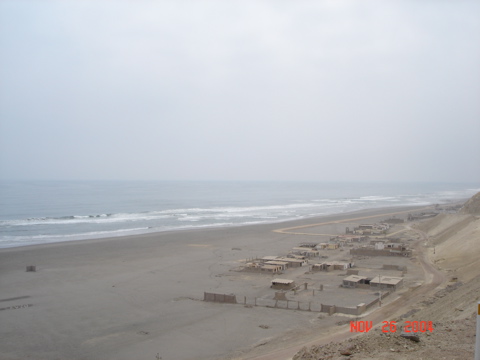
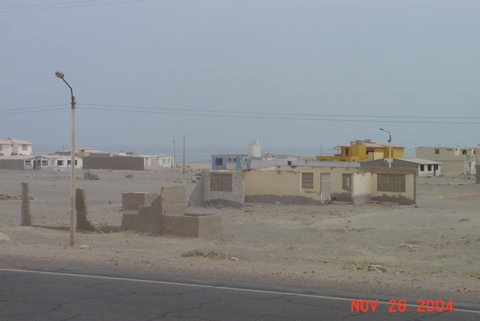
This used to be beachfront homes for wealth Arequipians. According to our guide book, “Sadly, the earthquake of June, 2001 sparked a tidal wave that devastated the beachside community and its tourism industry in one swift stroke. Camana itself, a bustling town of 15,000 people a bit further inland along the Rio Camana, seemed to fare better.
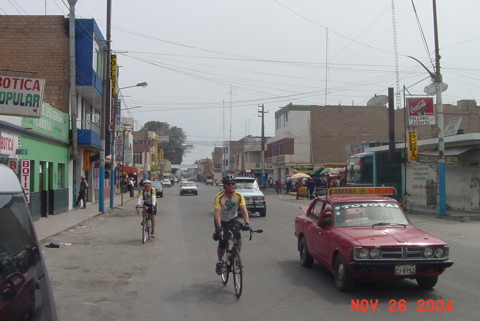
The river valley here is the greenest place we have been in since Jujuy, Argentina. Camana has so much water they even grow rice here.
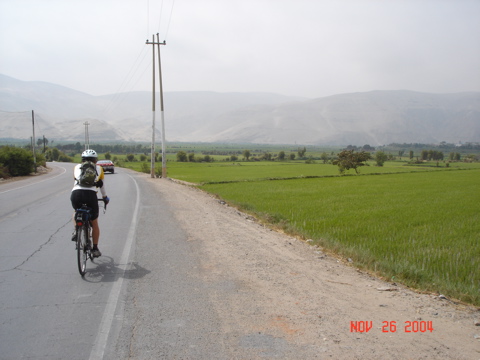
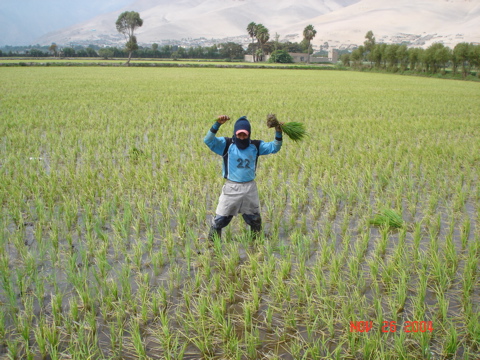
This Peruvian reacted very enthusiastically to my request for a picture. From here it is 220km/132 miles mostly along the coast to Chala, the next community of any consequence. Eduardo took this picture of me along the deserted coastal road, and I took this picture of Eduardo thinking of Fabiana, his long-time girlfriend, whose birthday is coming up soon.
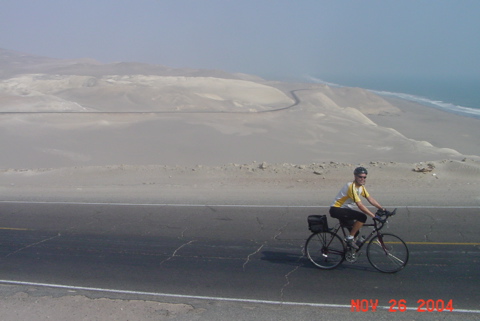
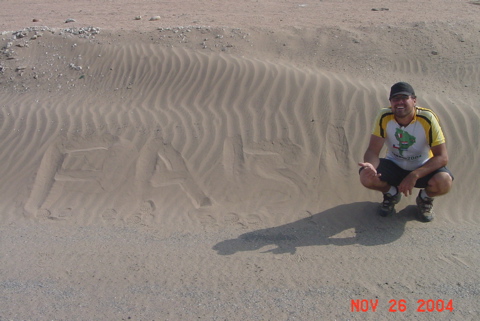
About 100 miles into the day we rode through a valley and into a town not on our map – Ocana. Steve bailed on the day at this point and drove ahead with Eduardo to find a place to camp. Riding alone up the big hill on the north side of this valley I took this picture looking back of the road snaking along the coast and the Ocana river valley ending at the ocean.
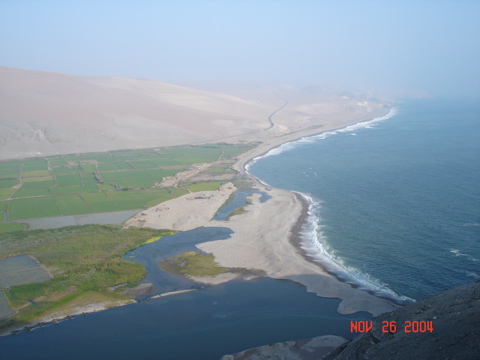
Eduardo and Steve were unsuccessful in their search for a campsite up-road. From the top of this climb, through some distance, you are in high, rocky cliff road. We packed me up and drove back south through Ocana to the beaches we passed miles back. As darkness approached, we found a sand road along the beach and drove until it ended at a cemetery.
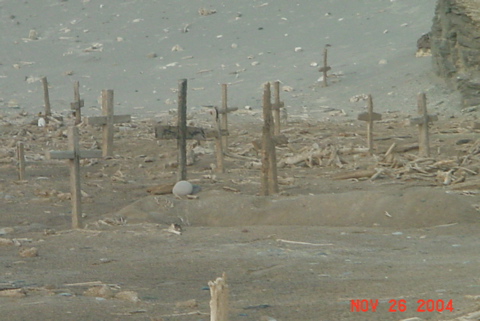
You don’t see many cemeteries on beaches, do you? As things turned dark, wee drove back up the beach a bit, set up camp, ate 4 chickens, drank wine, looked at the day’s photographs and toasted Dalton, who would have loved the day.
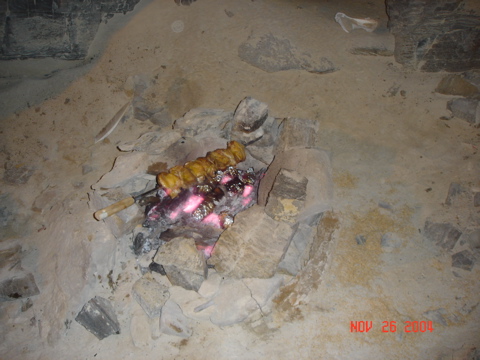
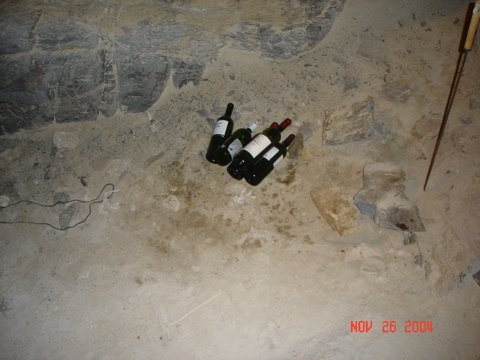
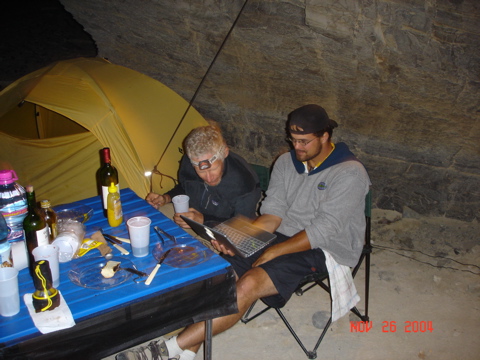
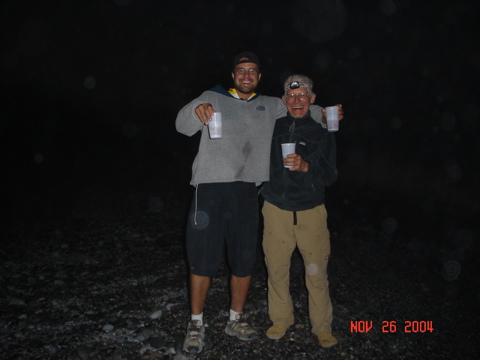
We are now camping out once again on the beach on the Pacific coast of South America. The pounding waves here hit a beach of stones a hundred feet away. You hear the stones rumble down after each wave pushes them up. We are camping against a cliff in an alcove with a little cave at the end. The approaching moon paints a line of the cliff edge on the beach. Steve says that in an hour, or an hour and a half, we will be in moonlight. Where are were people have camped or lived for centuries or more. Photos of the campsite tomorrow.

 November 26, 2004
November 26, 2004 